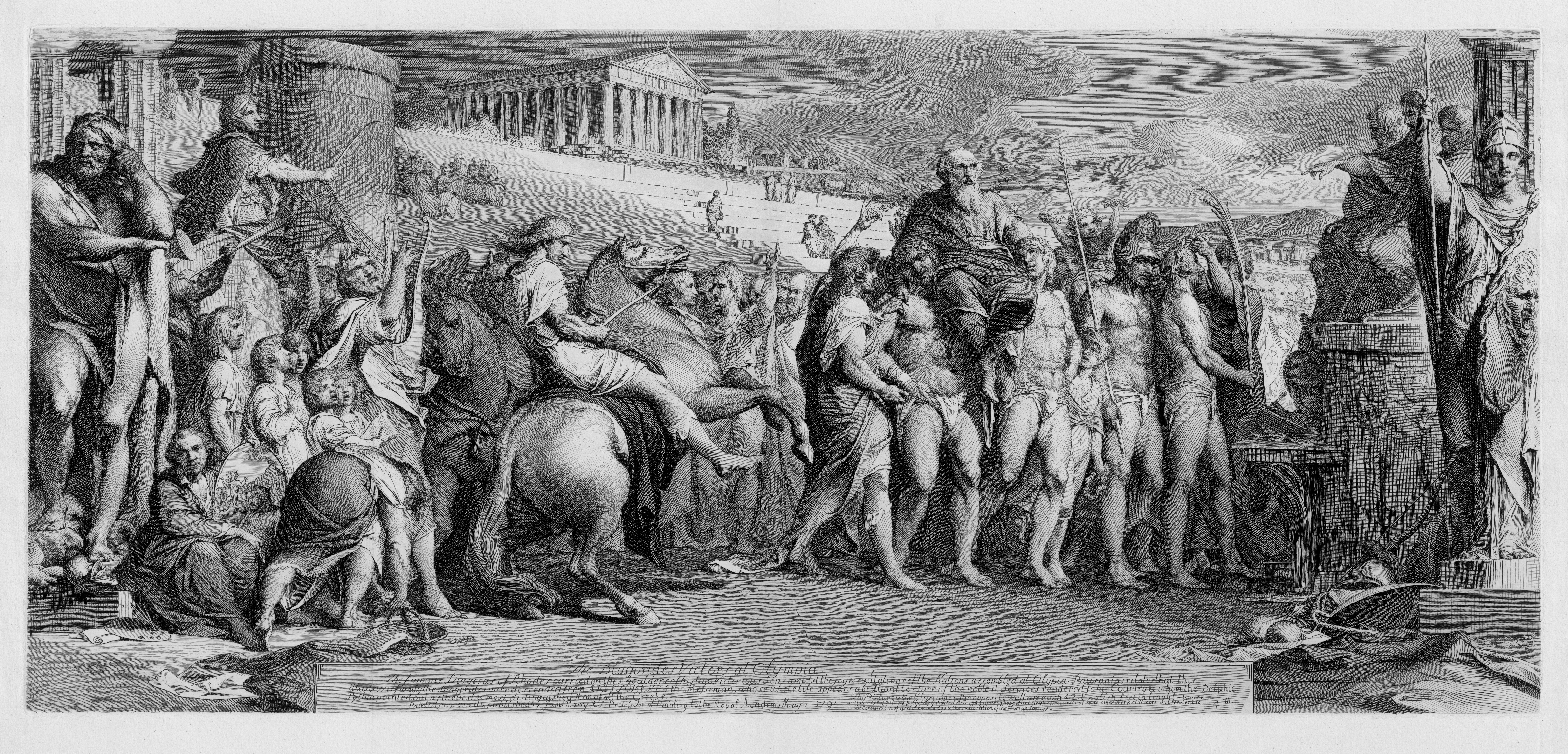Loading the page ...
James Barry
(1741 Cork – 1806 London)
Crowning the Victors at Olympia. Etching and engraving. 57.5 x 97 cm. 1792. Pressly 19 IV.
The first historical paintings the young James Barry made attracted the attention of the Irish-British writer and statesman, Edmund Burke. In 1764, Burke invited the up-and-coming artist to London, where he introduced him to Joshua Reynolds and Gilbert Stuart and subsequently enabled him to study for several years in Rome. Following his return to London, Barry exhibited two paintings on biblical and mythological themes in the Royal Academy in 1771 and 1772, the response to which was largely negative. Although this lack of artistic recognition meant that no commissions came his way for quite some time, he was nonetheless admitted to the Academy in 1773. In 1775, he published An Inquiry Into the Real and Imaginary Obstructions to the Acquisition of the Arts in England, a provocative essay directed primarily against Winckelmann’s classical theory of art. Barry remained an eccentric and visionary artist throughout his life.
His historical paintings are distinguished by their absolute originality and extravagant iconography and suffused with an unconventional, sombre poetry which anticipated the aspirations of the Romantics. Barry was at odds with his time, spending his last years in straitened circumstances and complete solitude. The present impressive, large-format sheet shows the entry of the Diagorids in Olympia. The composition is based on a monumental painting Barry executed in 1783. Due to the limitations of the etching medium, the print follows the prototype with individual variations. Barry never regarded his etchings as purely reproductive prints, but as works of art in their own right. With regard to the creative process he once said: “These alterations were made, not with a view to spare myself trouble or labour, nor from any dissatisfaction with the arrangement as it stood in the picture; but merely to give an additional value to the prints, which they could not otherwise receive” (Pressly p. 129). A little to the right of centre we see the aged Diagoras of Rhodes, the most famous ancient pugilist, being carried on the shoulders of his victorious sons. The Diagorids were considered the most respected and successful pugilist dynasty of ancient Greece. Barry shows their ceremonial entry into the city in remarkable detail and with a keen sense of narrative. As always his iconography is supremely original. One noteworthy detail is the self-portrait of the artist, who has depicted himself sat next to the attributes of painting on the left of the picture. Barry looks at the viewer with a pensive and melancholy gaze. A superb, even impression from the edition published in 1808 shortly after the artist’s death. Minor defects, otherwise in perfect condition.
Contact us for further information